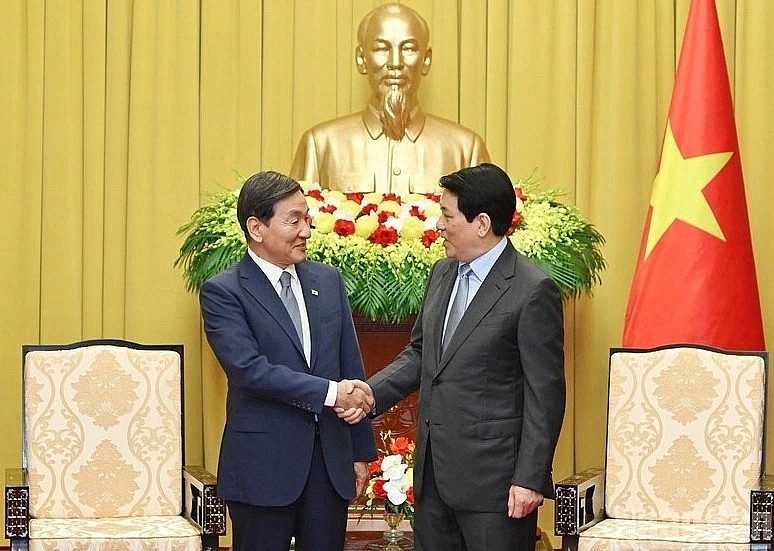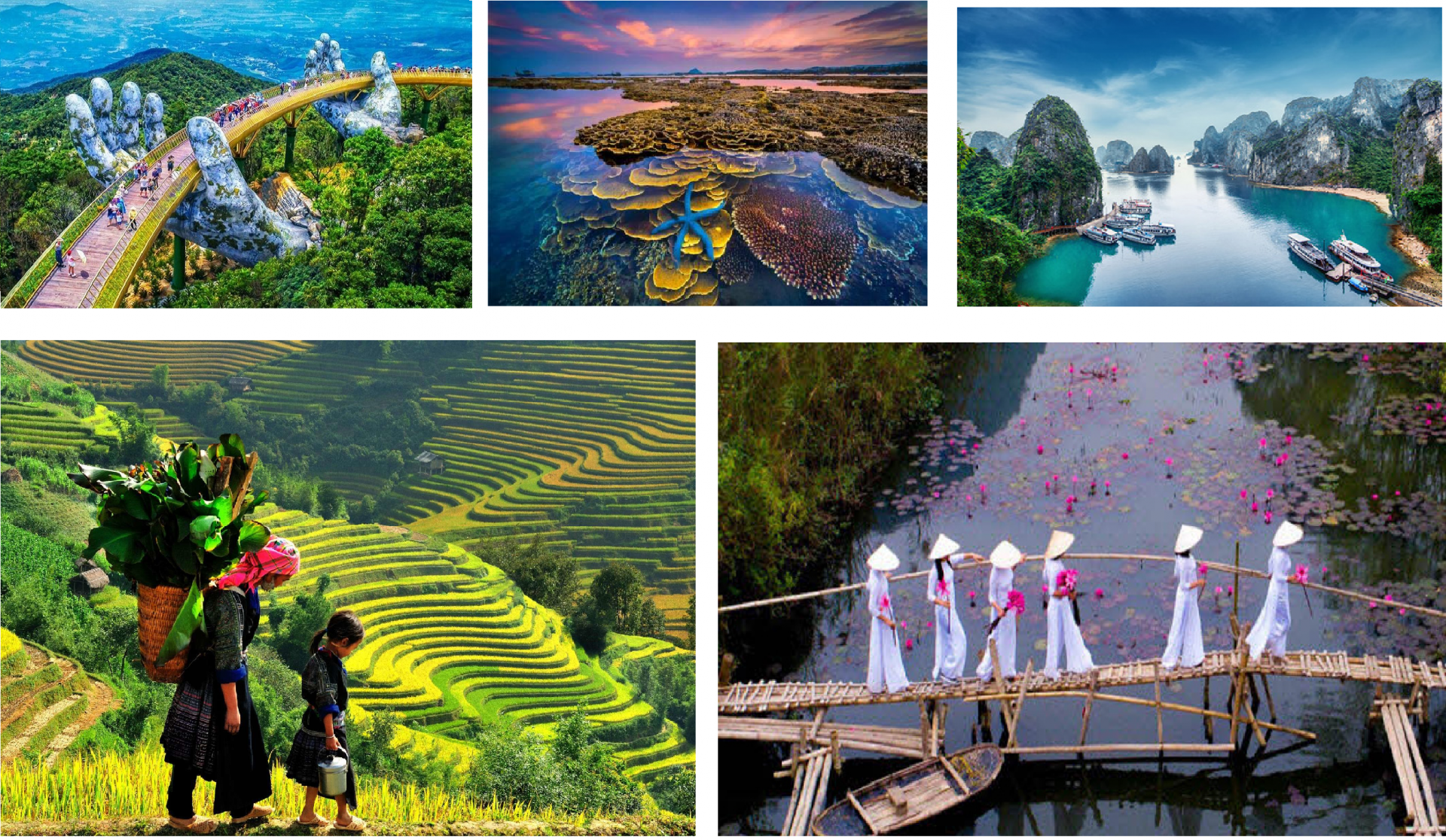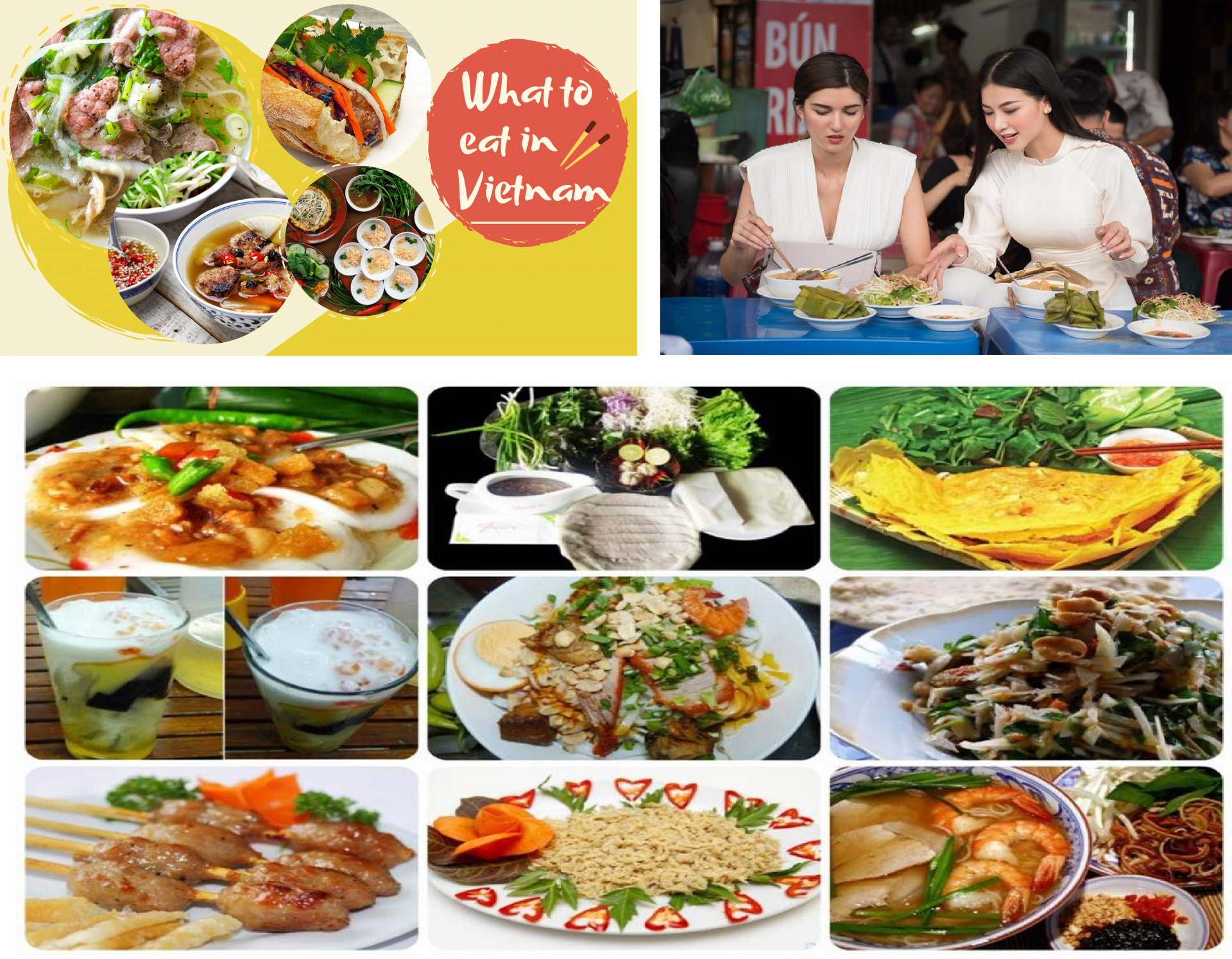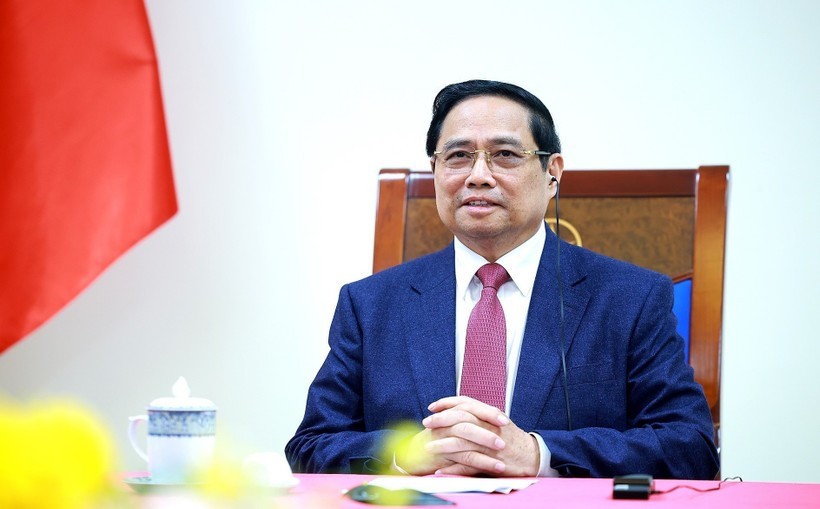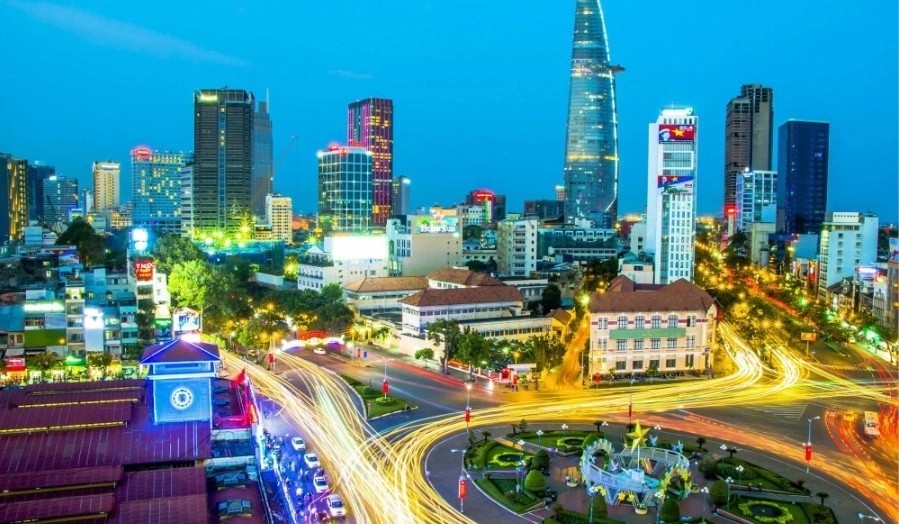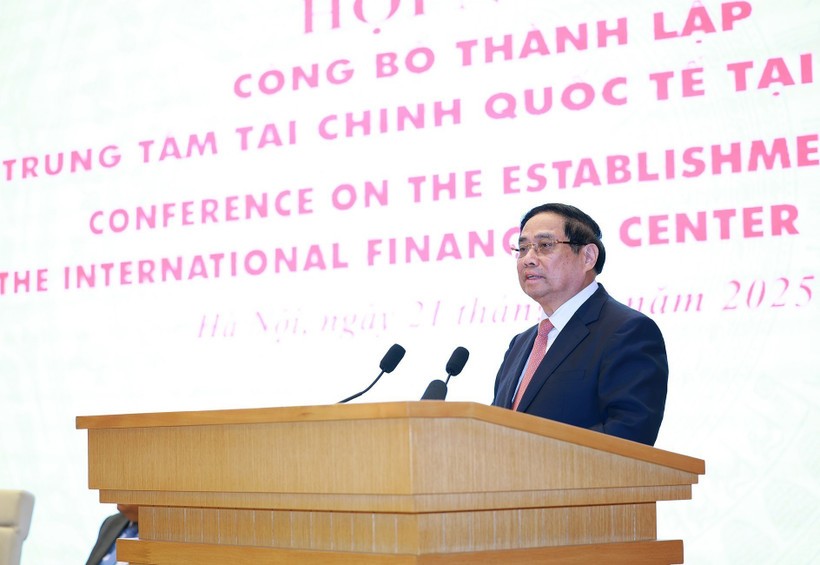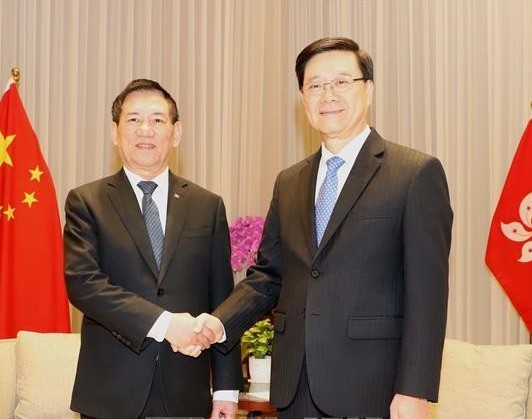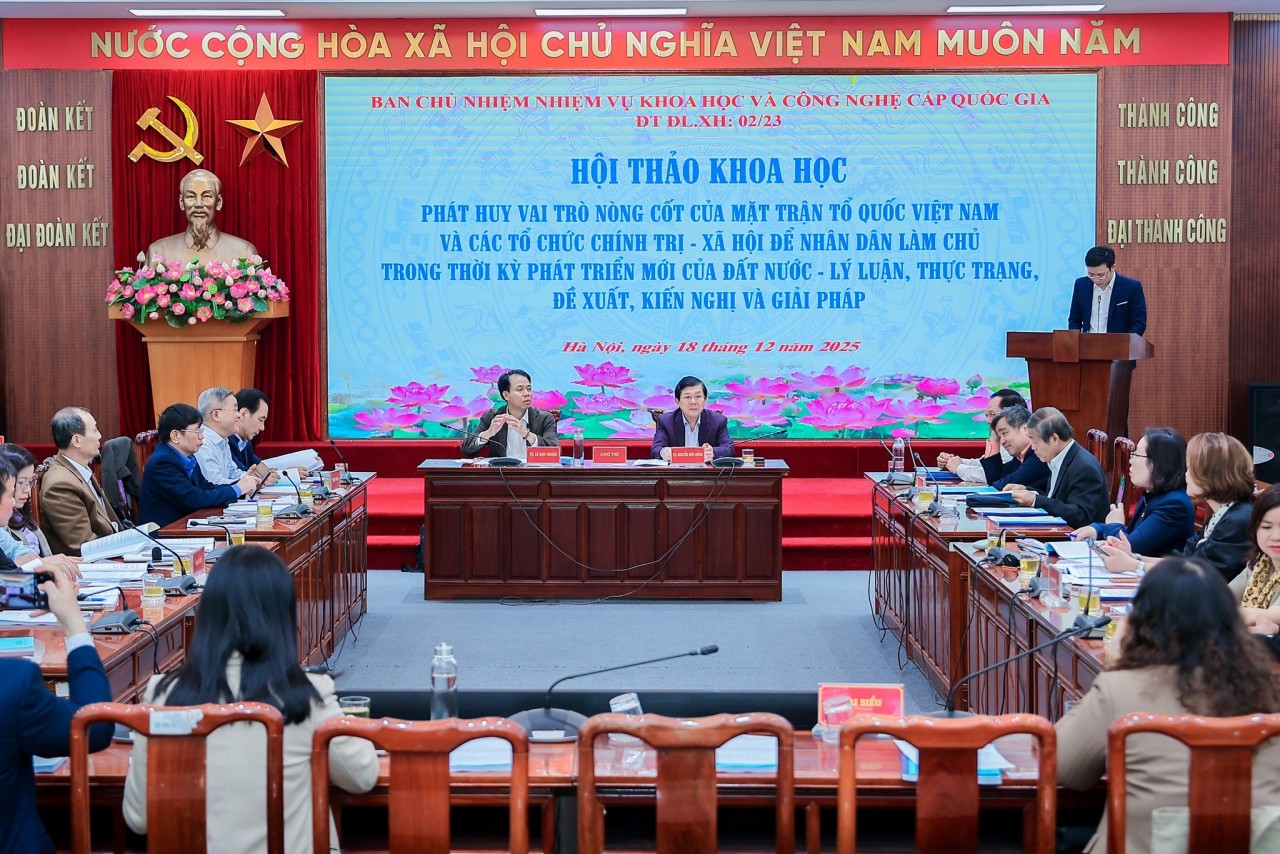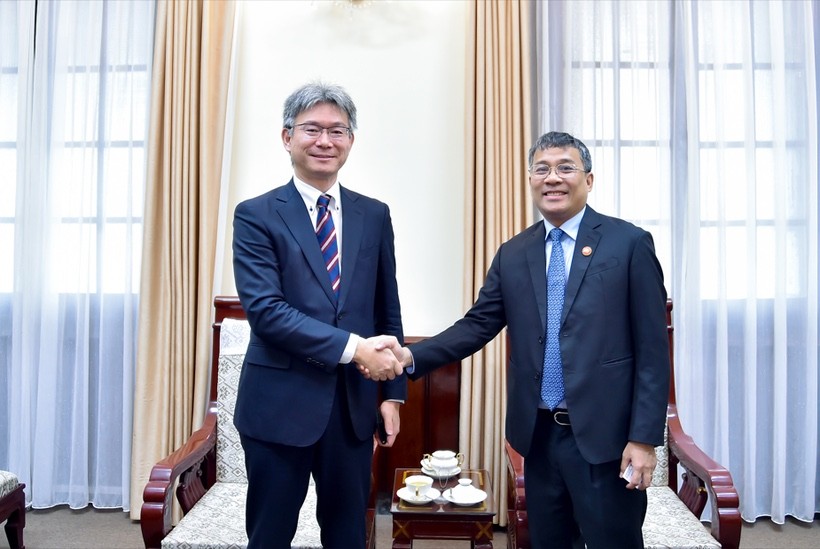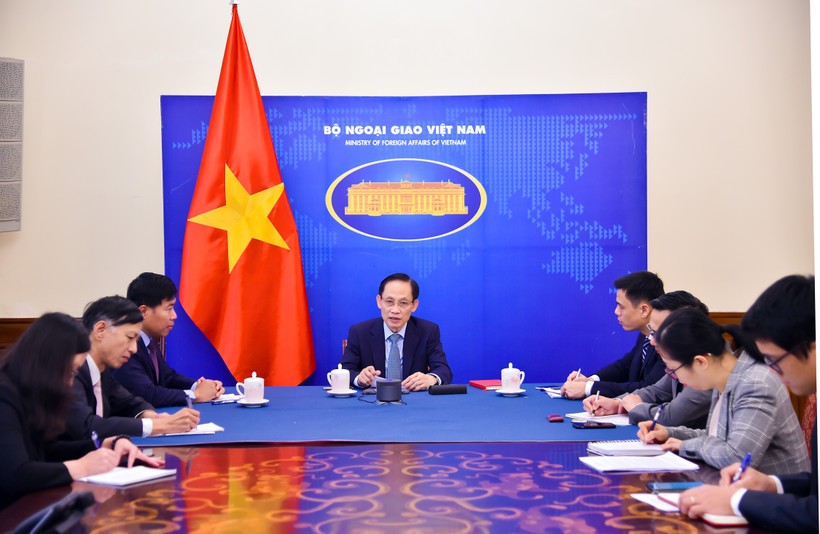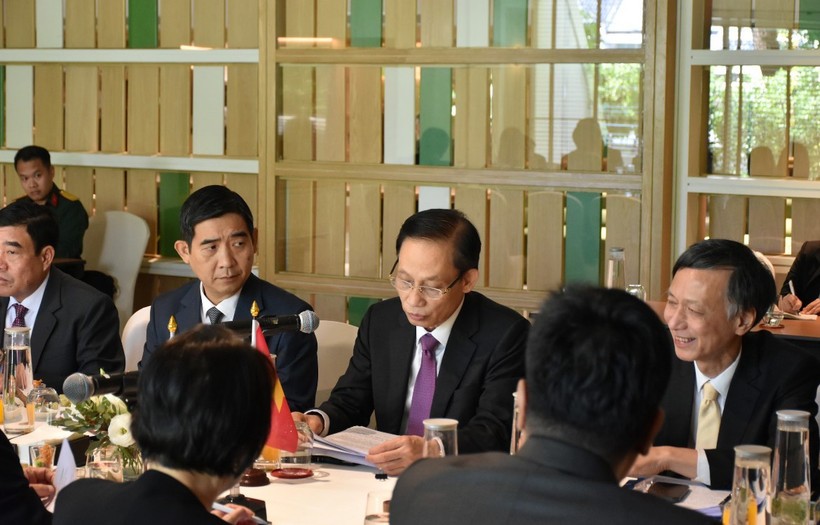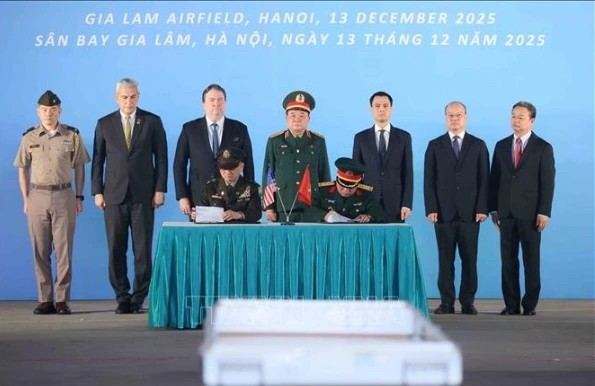Top Vietnamese, Cuban legislators pledge stronger ties at Geneva meeting
Chairman of the National Assembly (NA) Tran Thanh Man emphasized Vietnam’s commitment to deepen the traditional solidarity and special friendship with Cuba at his meeting with President of the National Assembly of People’s Power of Cuba Esteban Lazo in Geneva, Switzerland, on July 30.
At the event, which took place on the sidelines of the 6th World Conference of Speakers of Parliament at the UN headquarters, the Vietnamese top legislator expressed his delight at the robust development of the bilateral relations over the recent past, particularly the close cooperation between the two legislatures.
NA Chairman Man suggested both sides enhance the exchange of delegations and meetings at all levels, while maintaining and improving the efficacy of cooperation mechanisms to promote discussions as well as information and experience sharing in the areas where both sides hold strengths, making parliamentary collaboration an important pillar of the bilateral ties.
The Cuban leader, for his part, affirmed that the traditional solidarity and special friendship between the two sides have been continuously consolidated and expanded via Party, State, and parliamentary channels, noting deep and practical cooperation across the domains of politics, economy, trade, security, defence, and technical sciences, according to VNA.
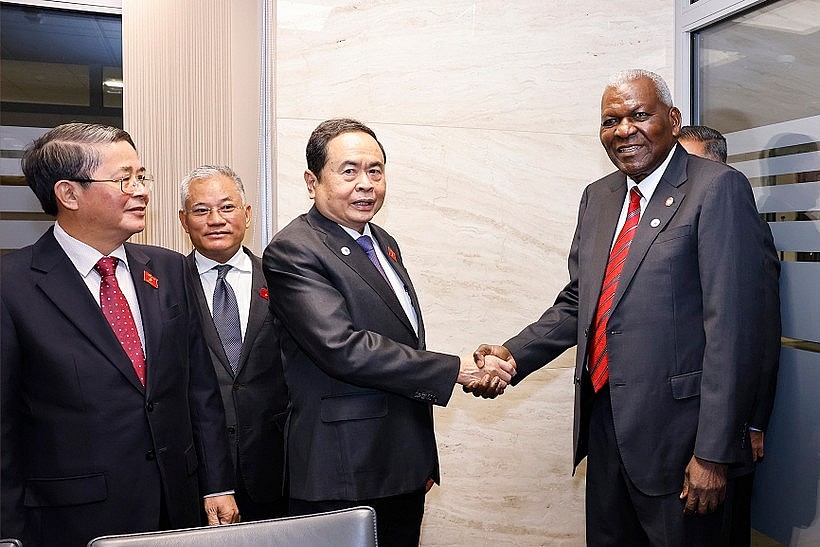 |
| Chairman of the National Assembly Tran Thanh Man (second from left) shakes hands with President of the National Assembly of People’s Power of Cuba Esteban Lazo. (Photo: VNA) |
He took this occasion to thank the Vietnamese Party, State and NA for their valuable support for Cuba, affirming the Latin American country is committed to boosting economic cooperation and stands ready to work with Vietnam to resolve difficulties faced by Vietnamese investors in the country.
The two leaders concurred to closely coordinate in implementing measures to strengthen the bilateral ties, including a series of activities to celebrate the 65th founding anniversary of Vietnam–Cuba diplomatic relations this year. They also pledged to continue coordination and mutual support at international organizations and multilateral forums.
Five years of EVFTA fuel growth in Vietnam-France trade
Over the past five years, the EU-Vietnam Free Trade Agreement (EVFTA) has spurred double-digit export growth, strengthened investment ties, and helped Vietnam secure a stronger foothold in the French and EU markets.
Head of the Vietnam Trade Office in France Vu Anh Son has spoken to the press in Paris, offering a comprehensive assessment of the EVFTA’s impact on bilateral trade as well as strategic directions for the years ahead on the occasion of the agreement’s fifth anniversary.
Since coming into force in August 2020, the EVFTA has stood out as one of the most pivotal milestones in the economic relations between Vietnam and the EU, and between Vietnam and France in particular. Amid unprecedented global turbulence brought on by the COVID-19 pandemic, geopolitical tensions, and supply chain disruptions, the agreement has served as a vital stabilizing anchor for bilateral trade.
Vu Anh Son highlighted the remarkable resilience of Vietnam–France trade relations as one of the most notable aspects over the past five years."
He emphasized, “Five years after the EVFTA officially entered into force, trade between Vietnam and France has not only posted impressive growth in scale but also demonstrated strong resilience and adaptability in the face of unprecedented global supply chain disruptions.”
Between 2021 and 2024, Vietnam–France trade saw a strong rebound, with export turnover rising from US$6.1 billion to US$7.5 billion, up 23% from the start of the period and well above the pre-COVID peak of US$6.5 billion in 2019, reported VNA.
Vu Anh Son noted that the EVFTA has brought more than just tariff advantages, it has spurred reforms in rules of origin, strengthened goods management, and broadened access to logistics, financial, and insurance services.
A particularly notable milestone was the official upgrade of bilateral ties to a “Comprehensive Strategic Partnership” during Party General Secretary To Lam’s visit to France in October 2024. This event has reinforced political and diplomatic ties while paving the way for broader economic and trade cooperation, with expectations for bilateral trade to grow 6–7% annually and reach US$12–15 billion in the coming years.
In terms of investment, the EVFTA has played a vital role through its commitments on investment protection, national treatment, and most-favored-nation status. French capital has primarily flowed into high-value sectors such as precision engineering, renewable energy, environmental technology, pharmaceuticals, and high-tech agriculture. Vu Anh Son stressed, “The presence of major corporations like Schneider Electric, Pernod Ricard, and Boehringer Ingelheim has elevated Vietnam’s management capacity and product quality, enabling domestic enterprises to meet the EU’s stringent standards.”
He further noted that the success of these sectors was not a matter of chance, but rather “a convergence of three key factors: direct competitive advantages from tariff preferences, the right timing as Europe sought to diversify its supply chains, and the internal capabilities and proactive strategies of Vietnamese businesses.”
Textiles and garments, and footwear are among the sectors that have benefited most directly and visibly from the EVFTA. Prior to the agreement, these industries faced relatively high import tariffs when entering the EU market. The gradual elimination of tariffs under the EVFTA has provided Vietnamese products with a clear price advantage. Major French retailers such as Decathlon have capitalized on this and significantly increased their orders from Vietnam.
Meanwhile, the agricultural and seafood sectors have seen remarkable growth, offering clear proof of Vietnam’s ability to penetrate even the most demanding segments of the EU market.
Vu Anh Son remarked, “The success story of Vietnamese rice is a prime example. Through active trade promotion and effective use of duty-free quotas, Vietnamese rice has entered major French supermarket chains such as Carrefour and Leclerc.”
This achievement was made possible by pioneering enterprises that invested in production, processing, and traceability systems in line with GlobalG.A.P. and ASC standards, successfully overcoming the EU’s stringent technical barriers.
While not as frequently cited as textiles or agriculture, electronics, machinery, and components represent Vietnam’s largest export category, playing a pivotal role in the global supply chain. Vietnam has emerged as a key hub for electronics manufacturing and assembly, with products such as phones, computers, and electronic parts accounting for a big share of exports to France and the EU.
However, Vu Anh Son also candidly pointed out a troubling paradox: “Growth in absolute value has not translated into deeper market penetration.” A report by France’s Ministry of Finance indicated that since 2019, Vietnam’s market share in France has seen little improvement, saying that that tariff removal is only the starting point.
In the textile sector, Vu Anh Son stated that the EU is tightening regulations on circular economy and sustainable fashion, requiring garments to be more durable, easier to recycle, and contain a certain proportion of recycled fibers, thus posing major technological and cost-related challenges for manufacturers.
Meanwhile, the agricultural, forestry, and seafood industries are also facing increasingly rigorous barriers from the EU, often referred to as the “Green Wall.” These include some of the world’s strictest sanitary and phytosanitary (SPS) measures, particularly regarding pesticide and antibiotic residue limits.
In the face of these challenges, Son accentuated the need to turn barriers into drivers of growth. He noted that the EU’s Green Deal represents both a major challenge and a unique opportunity for Vietnam to innovate and advance.
“Vietnam can gain a first-mover advantage by combining the implementation of the Just Energy Transition Partnership (JETP) with efforts to meet the requirements of the EU’s Carbon Border Adjustment Mechanism (CBAM) and Corporate Sustainability Due Diligence Directive (CSDDD),” he said.
To overcome challenges and move up the global value chain, Vu Anh Son proposed that Vietnam focus on three strategic pillars.
To overcome challenges and move up the global value chain, Vu Anh Son proposed that Vietnam focus on three strategic pillars: The first is to build strong domestic industrial capacity. He called for a shift from a passive FDI attraction model to a proactive industrial policy, with targeted incentives for supporting industries—particularly FDI in upstream sectors such as textile dyeing, specialty chemicals, and high-tech components.
The second is to modernize logistics and digital infrastructure in order to reduce costs and boost competitiveness.
The third is to develop high-quality human resources that meet the requirements of emerging industries and international standards.
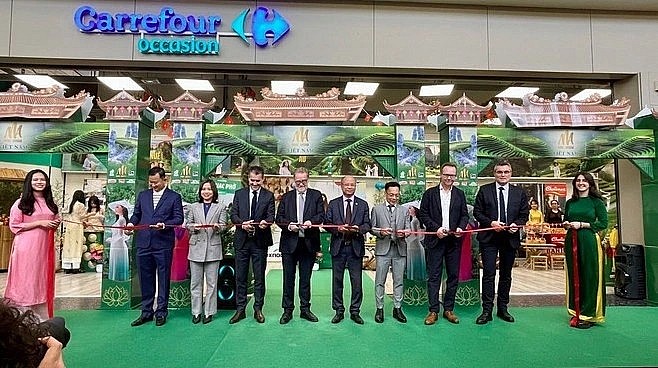 |
| Delegates cut the ribbon to inaugurate the Vietnam Goods Week at Carrefour Collégien hypermarket (Photo: VNA) |
He also underscored the importance of proactive economic diplomacy. He urged Vietnam to actively negotiate Mutual Recognition Agreements (MRAs) with the EU on conformity assessment and technical standards to ease the certification burden on exports. At the same time, he called for engagement with the European Commission to ensure that Vietnam’s carbon pricing mechanisms and greenhouse gas reporting standards are recognized as equivalent to those of the EU, thereby helping to mitigate the impact of the CBAM.
The biggest internal challenge, according to Vu Anh Son, lies in policy coordination. To deal with this, he recommended establishing a national steering committee on FTA implementation and value chain upgrading. “This is not about creating another layer of bureaucracy. It’s a structural solution to a structural problem,” he stressed.
Looking ahead, Vu Anh Son expressed optimism about the prospects of Vietnam–France cooperation under the EVFTA framework, noting that five years of implementation have significantly advanced bilateral trade ties. He emphasized that the agreement not only delivers economic benefits but also serves as a strategic stabilizing factor in the relationship between the two countries.
With the elevation of ties to a Comprehensive Strategic Partnership, he voiced hope for new breakthroughs in Vietnam–France economic and trade cooperation. Vietnam, he said, is increasingly positioning itself not just as a manufacturing hub but as an indispensable link in the global value chain.
“Amid global uncertainty, the EVFTA has helped forge a resilient Vietnam–France supply chain, solidifying Vietnam’s role as a trusted trade partner in the Indo-Pacific,” he added.
With a solid five-year foundation and clear strategic directions, Vietnam–France trade relations under the EVFTA are poised for continue growth, making a positive contribution toward achieving higher trade volumes in the years ahead.
Vietnam positioned to become key link in global semiconductor industry: Deputy PM
Vietnam possesses all the necessary conditions to emerge as a vital link in the region and global semiconductor supply chains, Deputy Prime Minister Nguyen Chi Dung said during a working session in Hanoi on July 30 with the business council for sustainable development of Taiwan (China).
At the meeting, the two sides discussed ways to enhance cooperation and promote the establishment of major research and development (R&D) centers and semiconductor research facilities in Vietnam.
Chairman of the council Hong-Yuan Lee briefed Deputy PM Dung on the progress made following his suggestions during a meeting held in May 2025. He said the council has assembled a list of 16 prominent experts, scholars, and corporate leaders with extensive experience in Taiwan’s high-tech and semiconductor sectors.
This advisory group includes former top executives of leading global semiconductor and technology corporations, researchers from prestigious universities and institutes in the US and Taiwan (China), and specialists in areas such as chip design, fabrication, artificial intelligence, quantum technology and smart manufacturing.
Vice Chairman of the council Konrad Young added that 100 scholarships would be offered this year to outstanding Vietnamese managers, experts, lecturers, postgraduate researchers and students working or studying in semiconductor-related fields. The scholarship programme is expected to run in three to four phases, with the first scheduled for September 2025 during the SEMICON Taiwan 2025 exhibition.
Deputy PM Dung commended the council for swiftly advancing cooperation plans following their previous meeting. He affirmed that Vietnam has created the most favourable policy mechanisms and ecosystem to support the semiconductor industry, with human resources being the country’s strongest asset.
He stressed the firm and long-term commitment of the Party and Government of Vietnam to developing the semiconductor industry. He emphasised that Vietnam has a clear strategy and ambition in this field, and is rapidly emerging as a central hub and key link in the regional and global semiconductor value chains, VNA reported.
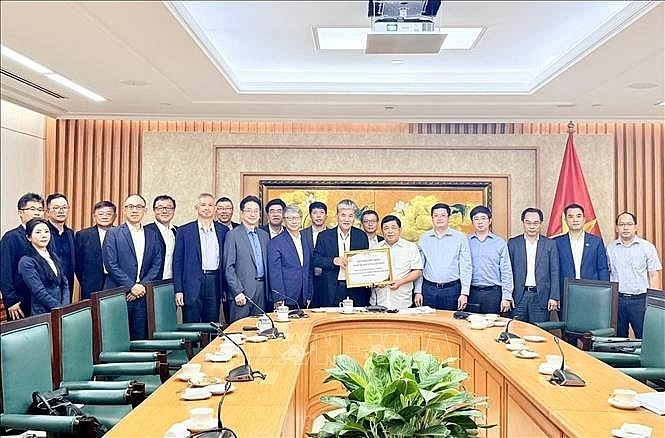 |
| Delegates at the working session (Photo: VNA) |
The Deputy PM called for greater international support, particularly drawing on the valuable expertise of Taiwan’s specialists.
He assigned the Ministry of Finance to work on a detailed action plan to realise specific cooperation projects with the council, including coordinating preparations for the expert group to begin formal advisory activities in Vietnam.
The official suggested initial areas of focus such as completing and implementing a national semiconductor development strategy; attracting foreign investment in high-tech and semiconductor sectors; and promoting technology transfer across different stages of the semiconductor supply chain, especially through the development of R&D centers, laboratories and joint research initiatives.
He also proposed strengthening cooperation with the council to establish major R&D centers and research facilities in Vietnam to support innovation, training and technology transfer in the semiconductor field.
Hanoi–HCMC among world's Top 10 busiest domestic routes
The air route linking Ha Noi and Ho Chi Minh City was ranked the fourth busiest domestic route in the world, according to a report by Noi Bai International Aport.
Airport authorities noted that passenger and flight volumes have surged during the peak summer season, while safety and security standards remain strictly maintained.
In the first half of 2025, Noi Bai International Airport handled 16.5 million passengers and over 100,000 flights. Its Terminal T2, which serves international routes, welcomed more than 7 million passengers compared to its annual design capacity of 10 million.
"This results in an exceptionally high frequency of operations and significant pressure on services," said a representative of the airport.
Despite the mounting operational challenges, Noi Bai International Airport maintained an on-time performance (OTP) rate of 74 percent between June 1, 2024, and May 31, 2025. Of the total flight delays recorded, 93.8 percent were attributed to airline operational issues, followed by weather (1.8 percent), airport-related equipment and services (0.8 percent), air traffic management (2.5 percent), and other causes (1.1 percent).
Recognizing the need to improve punctuality, the airport management authority is working closely with airlines and ground service providers to roll out a series of measures aimed at enhancing OTP.
Since February 1, 2024, the airport has implemented Phase 1 of the Airport Collaborative Decision Making (A-CDM) model. In the first six months of 2025, the system supported the management of 100,002 flights, optimizing runway and apron use, reducing ground waiting time, and improving flight punctuality.
The airport is also coordinating with the Air Traffic Flow Management Centre (ATFMC), airlines, and ground units to apply Level 3 Air Traffic Flow Management (ATFM) procedures—improving scheduling efficiency and mitigating delays caused by weather, military operations, and national events.
To address overcapacity, authorities are accelerating the expansion of Terminal T2 through a phased construction plan that allows the terminal to remain operational. The expansion, slated for completion by late 2025, is expected to ease overcrowding, improve passenger comfort, and enhance service quality, cited VGP.
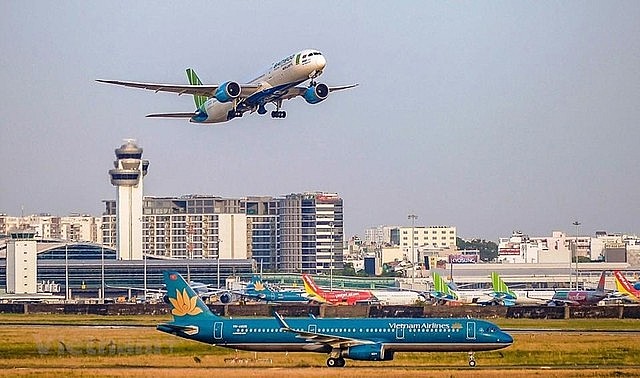 |
| The over-1,000-km air route between Ha Noi and Ho Chi Minh City is featured among the top 10 busiest globally since 2017 and is dubbed the "golden" route by the Vietnamese aviation industry. |
Other ongoing initiatives include a comprehensive review of all commercial service providers to ensure service quality, transparent pricing, and professional staff conduct. The airport is also investing in passenger-friendly technologies such as biometric check-in via the VNeID platform, expanded self-service kiosks, and the ACV iCute online check-in system.
In 2025, Skytrax ranked Noi Bai International Airport among the world's Top 100 best airports, placing it at number 79—up 17 spots from the previous year.
The airport reiterated its commitment to working closely with all aviation stakeholders to further improve operational efficiency and passenger experience.
 | Vietnam News Today (Jul. 27): Vietnam, Hungary Promote Human Resource Training Vietnam News Today (Jul. 27): NA leader praises Morocco–Vietnam Friendship Association's contributions to bilateral ties; Vietnam still has room to achieve ambitious 8.5% growth target, ... |
 | Vietnam News Today (Jul. 28): Vietnam, Tanzania explore local cooperation opportunities; Time Out names Vietnam among best budget destinations in Southeast Asia; Vietnam, UAE sign ... |

